The Economics and Statistics Division maintains archives of previous publications for accountability purposes, but makes no updates to keep these documents current with the latest data revisions from Statistics Canada. As a result, information in older documents may not be accurate. Please exercise caution when referring to older documents. For the latest information and historical data, please contact the individual listed to the right.
<--- Return to Archive
For additional information relating to this article, please contact:
August 14, 2023SELF-REPORTED POSITIVE COVID-19 TESTS AND SUSPECTED INFECTIONS, 2022 Statistics Canada recently released results from the second cycle of the Canadian COVID-19 Antibody and Health Survey, conducted with the Public Health Agency of Canada and COVID-19 Immunity Task Force.
The questions referred to a period from April 1 through August 31 of 2022, covering only the population aged 18 and older living in the Provinces (territorial population were not surveyed). It excluded populations living on reserves or other Indigenous settlements as well as Canadian Forces personnel living on base and those in certain remote regions. Positive test results or suspected infections refer only to a first or only infection.
Across Canada, 61.1% of the population reported neither a positive test for the virus SARS-CoV-2 nor a suspected infection. Ontario, British Columbia and Atlantic Canada reported higher shares of the population with neither a positive test nor a suspected infection. Québec and the Prairie provinces reported higher shares with either a positive test or a suspected infection.
A higher portion of males across Canada reported neither positive test nor suspected infection. This was the case for Ontario, Québec and the prairie provinces. In British Columbia and Atlantic Canada, females were more likely to have neither a positive test nor a suspected infection (though the difference was very small in Atlantic Canada).
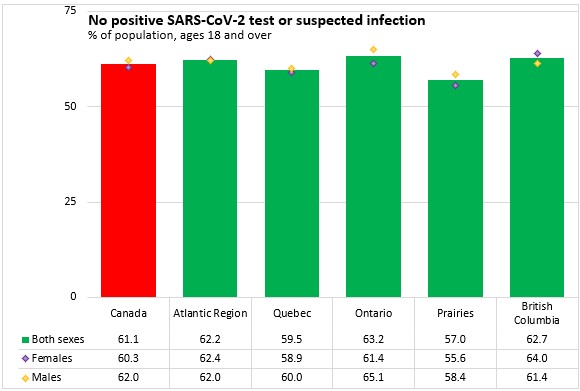
Differences in the prevalence of the SARS-CoV-2 virus by test type or self-identified suspected infection (in the absence of a positive test result) may reflect both the circulation of the virus as well as each Province's approach to test distribution and access.
In Canada, 12.0% of the population reported a positive test for the virus from a polymerase chain reaction (PCR) test. The portion in Atlantic Canada was the same as the national average. Higher shares of populations in Québec and the prairie provinces reported positive PCR tests while lower shares reported positive tests in Ontario and British Columbia. Across Canada, the portion of females reporting a positive PCR test was higher than the portion of males reporting a positive test - a phenomenon that held in every region, though the difference in Atlantic Canada was marginal.
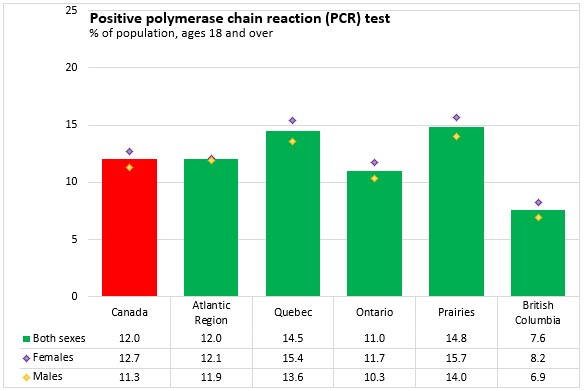
As the rapid antigen test (RAT) for the SARS-CoV-2 virus was more widely available, a larger portion of Canada's population reported positive antigen tests: 17.5%. Positive RAT results were more prevalent in the prairie provinces, Québec and Atlantic Canada. They were less prevalent in Ontario and British Columbia. RAT-identified infections were more common among females than males across Canada. This was reversed in Atlantic Canada and British Columbia where more males than females reported infections through a RAT result.
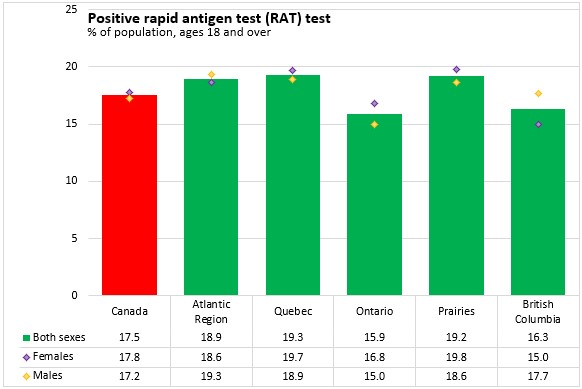
A total of 9.2% of Canadians reported a suspected SARS-CoV-2 infection without a positive test result with little difference between the portion of males and females. The portion of populations reporting suspected infections without a positive test result was highest for British Columbia and lowest for Québec and Atlantic Canada.
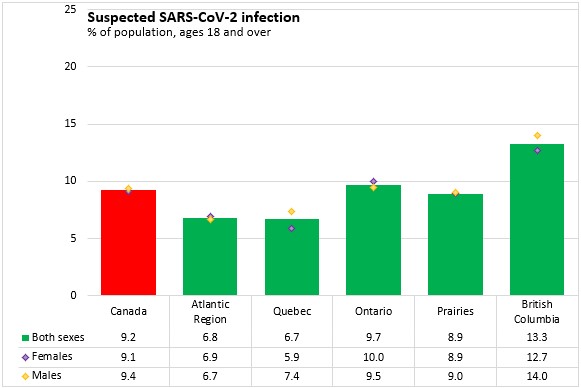
By age cohort, populations aged 65 and older were most likely to report neither a positive test nor a suspected infection. Younger populations (ages 18-34 and 35-49) reported higher prevalence of positive test results or suspected infections.
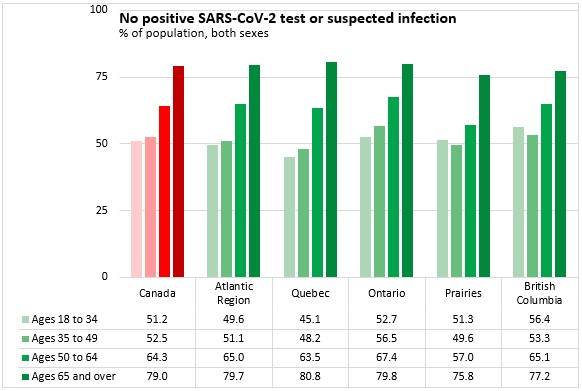
Just over 15% of Canadians aged 18-49 reported positive PCR test results. Higher portions of those aged 50-64 also reported positive PCR test results in Atlantic Canada, Québec and the prairie provinces.
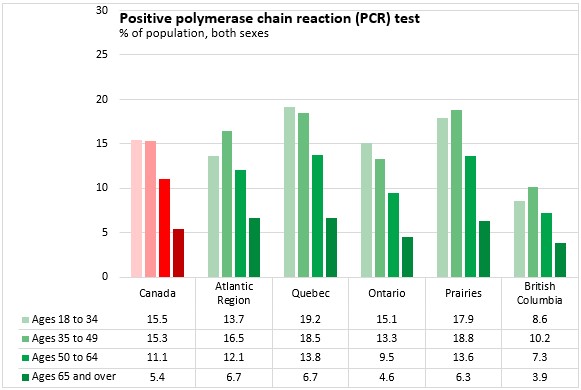
Positive RAT results were reported by more than 21% of Canadians aged 18-49, with higher shares of these age cohorts in Atlantic Canada and Québec. Positive RAT results among those aged 50-64 were more prevalent in Atlantic Canada, Québec and the prairie provinces and less prevalent in Ontario and British Columbia.
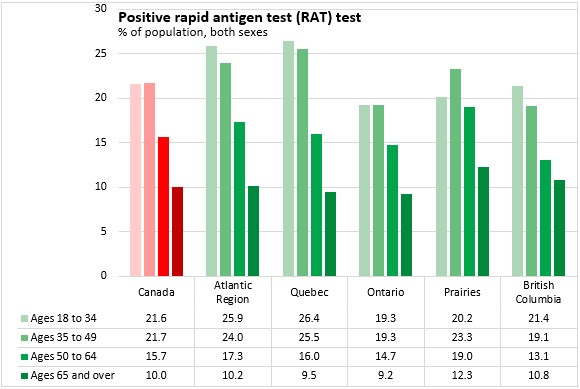
Reporting a suspected infection (without a confirming test result) was notably more common in British Columbia - for all age cohorts.
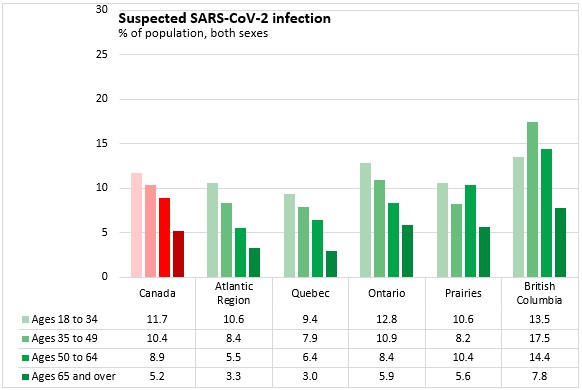
Source: Statistics Canada. Table 13-10-0868-01 Self-reported positive COVID-19 tests and suspected infections in the adult Canadian population by region, sex and age group
<--- Return to Archive